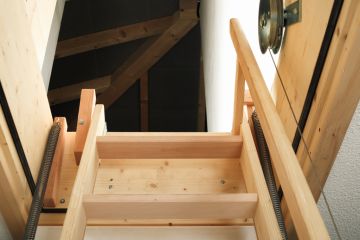The homes where residents save big on energy bills

As energy costs soar across the nation, so do the number of apartment buildings offering bills of less than $500 a year, and more are on the horizon.
They are the result of an increasing number of owners retrofitting their blocks with solar panels, batteries and alternative water heating systems and developers vying to be among the first to build new blocks with maximum energy savings.
Either way, Australia is on the cusp of a revolution in apartment living, which will help residents face a future of lower energy bills.
So, which buildings are among the best options?

Zinc Apartments, Alexandria, Sydney
Resident Nathan Hage, on the strata committee of the owners corporation, oversaw a massive retrofit of this 48-apartment block built in 2005, to include solar panels, efficiency improvements, 10 EV charging stations for electric cars and upgrades to lighting — from fluorescent to LED with sensors.
Last month, the electricity bill for his two-bedroom apartment, without the fixed fee, was just $6.28.
“Overall, we’ve reduced energy consumption by 85 per cent and the cost by 99 per cent,” Hage said.
“Our next goals are to replace the gas hot water system with electric heat pumps and batteries for the whole building. We’re confident then that we’ll have sufficient solar to service all the building’s needs.”
Nightingale Anstey, Brunswick, Melbourne
The eight-level, 34-apartment building was completed last year and is one of the latest projects by Nightingale, a not-for-profit company building housing in a style that will foster community and improve sustainability.
Nightingale Housing spokesperson Kate Longley said: “Our apartment energy bills aren’t far off $500 per apartment a year as we do power all buildings with a mix of solar and 100 per cent certified green power supplied on an embedded network.”
“Buildings are all electric, no gas, and heating is hydronic hot water powered by a centralised heat pump,” she said.
The Galleria, Woolloomooloo, Sydney
This was the first building in Sydney to retrofit batteries as well as solar for the common areas, says Brent Clark of apartment energy efficiency advisors Wattblock.
“It’s been a six-year journey, but it’s meant such a saving that they haven’t increased strata levies for many years.”
The six-level, 64-unit block had a lighting upgrade, a heat pump integrated into a new gas hot water system, a solar system added and two 13 kilowatt batteries to store excess generated power.
Chair of the owners corporation Michael Whitby said, “the energy bill for a one-bedroom unit would probably be close to $500 a year.”
Folia Apartments by Mirvac, Doncaster, Melbourne
Completed in 2021, this 39-apartment building was constructed with a 70 kilowatt solar system. Each apartment has its own small rooftop solar, with most of the energy generated sent to their shared grid. Allume Energy’s SolShare system then sends it to apartments using power at that time.
Allume’s housing partnerships consultant Will Anstee said the first 12-month review found that around $300 per year was saved by every resident.
“Their grid consumption was down by 30 to 35 per cent … and after the supply charge is taken off, we’d estimate most people’s bills would be below $500.”
Serenity, Chatswood, Sydney
Built in 2004, this block of 44 units has had a solar system and a gas booster for almost two decades.
But in the years since, resident and secretary of the strata committee Brian Peck has installed 30 kilowatts worth of solar panels to service common areas, and replaced the gas water heaters with an electric heat pump.
“Our gas bills were instantly halved … I pay just $150 a year for hot water to a two-bedroom apartment,” he said.

Bottlebrush at Schofield Gardens, Schofields, Sydney
Named the best mid-rise residential development metro at the 2021 Urban Taskforce Development Excellence Awards for its ground-breaking sustainable design, the development’s first stage, Bottlebrush, has solar panels and the largest apartment power battery wall in Australia.
The system delivers around half of the electricity load at no extra cost to residents.
Andrew Hrsto, founder of Developer ALAND, said the company was building communities of the future.
“Our vision has been to lead the way in delivering renewable energy, reducing the usage of cooling and heating systems.”
Highett Common, Highett, Melbourne
It is still under construction, but Highett Common is set to become the first medium-density net zero carbon apartment building in Victoria.

Stage one will be more than 160 apartments and lofts across two buildings, and 27 townhouses. They will be all-electric, with solar, natural ventilation, Greenpower to communal areas and EV charging. It is expected to be completed in 2025.
Developer Sunkin Property Group’s general manager of development Lloyd Collins said demand for sustainable developments was increasing exponentially.
“Highett Common’s eco-initiatives are an investment that will protect the site’s future values and save residents money by reducing energy costs,” he said.
Norwest Quarter, Norwest, Sydney
Now being sold off the plan, the first zero-carbon stage of developer Mulpha’s Norwest Quarter will have 196 apartments which will consume two-thirds less energy than a typical unit, and a third less water from the grid, with solar panels, electric hot water and induction cooktops.
Retired educator Lindsay Wasson, 73, has just bought a unit there because of the energy-saving sustainability features.
“It’s so future-oriented and with the smallest carbon footprint, we can hope for,” he said. “It’s actually very exciting to buy something that’s a part of the vision for the way we should live in the world in the future.”
We recommend
States
Capital Cities
Capital Cities - Rentals
Popular Areas
Allhomes
More
- © 2025, CoStar Group Inc.


/http%3A%2F%2Fprod.static9.net.au%2Ffs%2F8c373d51-7bcc-4562-95be-cf8e9a93e7e5)






